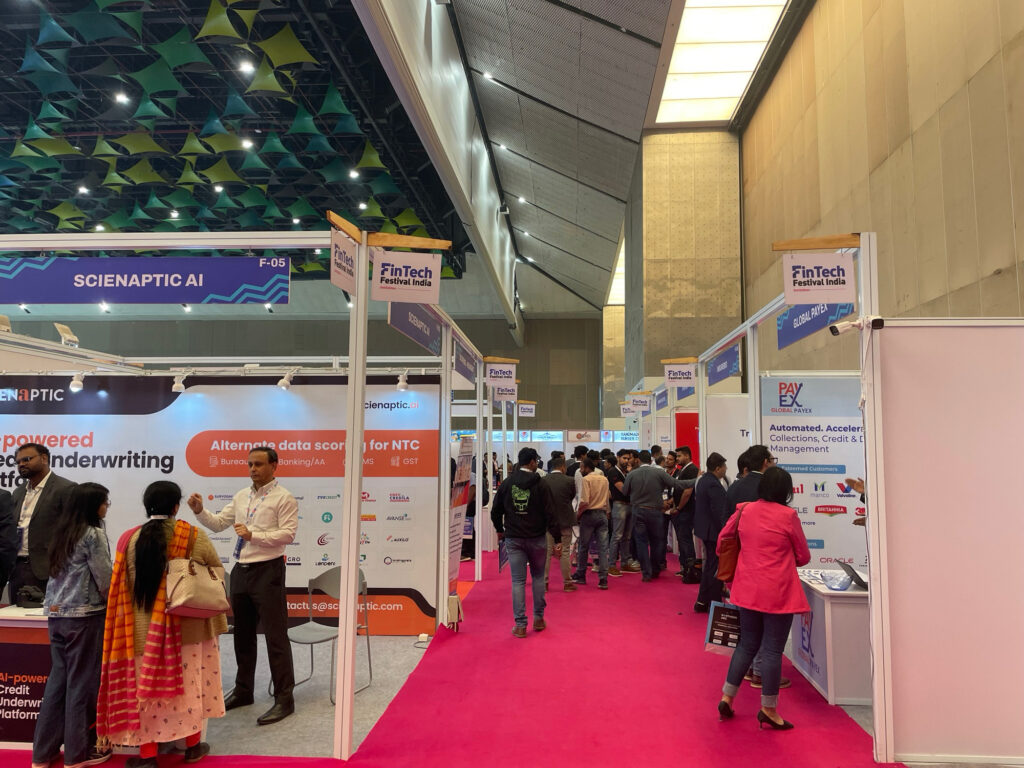Approaching Distribution Studies
Rahul Mukherjee / University of Pennsylvania

What does one study while researching media distribution? What are the sites of distribution, or put another way, what are the passageways through which distribution occurs? Alisa Perren (2013:67) has stressed that studying distribution entails considering the “space in between production and consumption.” Innovative approaches to studying disruptions in news distribution or retail supply chains with increasing digitization and consolidation have been generative (West, 2021; Braun, 2021). Some others have studied distribution in relation to not just contemporary logistical software systems but also the wider history of media supply chains. My very short survey here is far from any kind of comprehensive attempt to map the field of media distribution studies. All I offer are some scattered, distributed footnotes.
Joshua Braun (2021) notes that “media distribution” is a “collection of socio-technical practices,” and one methodology of studying media distribution would be “to trace out the route taken by media products as they make their way from the producer to the consumer, (re)exploring the system from the vantage point of each of the various individuals and intermediaries who handle the content along the way” (Braun, 2021: 42). I have drawn from this methodology in my book on mobile media distribution that I am completing right now. This entails, in my case, interviewing various professionals involved with the distribution backend at various stages—content curators, catalog experts, content delivery networks, encoders, cloud architects—who enact socio-technical practices by working with transcoding algorithms, edge computing technologies, and data centers to ensure streaming content reaches user mobile phones, television sets, laptops, and iPads.
Another instance of a similar kind of work that draws on a “media backends” approach to think about socio-technicalities and political economies of streaming distribution supply-chain would be an essay by Vibodh Parthasarathi, Philippe Bouquillion and Christine Ithurbide on the cross-sectoral relations in Video-on-Demand markets. The essay is part of a book collection about media backends edited by Lisa Parks, Julia Velkova, and Sander de Ridder. The editorial introduction offers a way to think across and between a variety of media backends (including electronic components in devices, data centers, algorithms) to account for systems and relations that seem to be far away from users’ frontends (screens, interface), but continue to shape and condition user experiences.
My objective is not to create false binaries between representational analysis and distributional tracings because representational analysis can help in understanding logistical supply chains and the affective address of distribution infrastructures. We of course need more work on close representational analysis, but I am often surprised to hear that studies of distribution are not considered meaningful. How can arranging things, directing flow, setting up blockages, and regulating access not have meaning? Distribution Studies scholars though certainly need to self-reflect on why some of the scholarship in the subfield is considered too descriptive and less analytical, and at times is perceived as invoking gender-race-caste-class-based inequalities only to then level them out. This is despite a repeated emphasis by distribution researchers that there is a power tilt towards distribution in the contemporary media economy with the rise of platformization.
Marking a departure from the overwhelming focus on representational analysis, the scholarship of Ravi Sundaram (2011) and Roman Lobato (2012) on mapping informal and piratical media distribution has helpfully demonstrated how media distribution shapes media materiality and film experience. Sometimes, an act of mobile media distribution might involve the informal exchange of memory cards containing (down)loaded music videos, which can then be inserted into mobile phones and watched. This was an important way of consuming and distributing music videos in India from 2010-2015 which shares key similarities with the memory stick (paquete) distribution media economy in Cuba as noted by Laura Zoe-Humphreys (See Figure 2).

At other times, distribution involves the formal media industries and corporate power, which controls the flow of streaming content into mobile phones, limiting what media is available where and for how long. Donoghue et al. (2021:6) note that researchers should study not only the macro-level political economies of oligopolistic media distribution mega-corporations but also the “micro-social practices of individuals” who work at various stages of the distribution supply chain. This helps in examining how corporate power and control is “devolved, divided, and differentiated, that is to say, distributed” among these different distribution professionals (Donoghue et al., 2021:6). In this conceptualization, distribution is also about division, differentiation, and dispersion of control and power, and not merely about directed targeting of goods towards consumers. There is a need to consider the “distributed” in distribution studies. The “distributed” in André Brock’s (2020:2) remarkable book Distributed Blackness: African American Cybercultures refers not only to his methodology Critical Technocultural Discourse Analysis’ understanding of “discourses across websites, services, and platforms,” but also stands for the way of approaching technology as “discourse, practice, and artifact.”
Media distribution studies has often shied away from affect theory in explaining the spreadability of content, but Joshua Braun (2021:32) has noted that it might be “potentially rewarding” to see how “circulation of affect” and “other forms of circulation might be connected to media distribution.” I have at times drawn from scholarship in affect studies to explore the circulatory practices of instant messaging and short video platforms. Borrowing from the monadological theories of Gabriel Tarde, Tony Sampson (2012) makes the role of moods, feelings, and emotions key to the spread of viral video and/or affective contagion. Sampson’s Tardian affective contagion theory also eschews the rigid and instrumental notion of networks with edges and nodes, and proposes a more ambitious epidemiological diagram for the spread of affective contagion. This focus on affective contagion should not stop us from accounting for the political structures and cultural contexts that exist for the build-up of affective atmospheres which end up influencing particular micro-habits and usage practices of platform users. Borrowing from affect studies to research distribution does not mean we eschew the political economy of distribution.
Within media industry scholarship, more recently, there have been calls to think beyond the portal-platform and professional generated content (PGC) and user generated content (UGC) divides to study possible overlaps and blurring of boundaries in digital production and distribution cultures (Mehta and Cunningham, 2023). There is often a tendency to suggest that UGC often moving through instant messaging platforms (WhatsApp) and short video platforms (TikTok, Moj) is less intentionally directed and hence is more specifically about circulation and less about distribution. When I have explained how political parties in India, using their cadre and local organizers, clearly direct their outreach messages through WhatsApp towards particular voters in specific constituencies (having gathered data using membership drives and the “missed call” initiative), I am told that is not really distribution. This despite political parties nowadays using influencer marketers and local micro-celebrities (and even AI technologies) to personalize and customize their messages with specific socio-cultural tells of a region where the mobile phone user, a potential voter, lives. This is a similar language of customization and personalization I hear from Netflix and other streaming company executives when they discuss knowing their audiences and subscribers, albeit with different intentions in mind. The entanglements between political, cultural, and industrial organizations have to be considered while studying and theorizing distribution practices.
How can we think of the study of distribution beyond media industries approaches? Also, with changes in content, do distribution strategies change? Distribution thought in elemental and “atmospheric” keys, alert to dispersions, sedimentations, and accumulations in “unequal concentrations,” might be another way to find overlaps across media industries and environmental media studies, especially as media and energy debates and practices become more and more entangled.Distribution is where the impact of platform economy, whether in streaming film/TV content or e-commerce delivery, has been arguably felt the most. With increasing financialization of distribution supply chains, how, then, could distribution of digital money be left out of platform studies or distribution research? This has been an increasing preoccupation in my own research ever since the ruling regime in India announced demonetization in the country in 2016. How would media distribution studies respond if it has to study circulation of digital money to/through mobile phones and laptops? One would then have to consider the “communicational politics” of money circulation and the role of financial technology (fintech) companies (Swartz, 2020). Fintech created application programming interfaces (APIs) and software development kits (SDKs) help in figuring out alternative credit scores and identification verifications for payment and loan apps that draw relations between data and money, and enable their circulation (Pybus and Coté, 2022) (see Figure 3). These distribution platforms have worthy goals of participatory (financial) inclusion but could lead to predatory inclusion, including debt traps.

Image Credits:
- Dispersion (Photo by Yingchih on Unsplash).
- MicroSD cards and download vendors loading cards with music videos (Gaya, Bihar, India). Photo credits: Rahul Mukherjee and Abhigyan Singh
- FinTech Festival 2024, Dwarka, New Delhi, India (author’s personal collection).
References:
Brannon Donoghue, Courtney, Timothy Havens, and Paul McDonald (2021). “Introduction Media Distribution Today” In Courtney Brannon Donoghue, Timothy Havens, and Paul McDonald (eds) Digital Media Distribution: Portals, Platforms, Pipelines, New York University Press: NYC.
Braun, Joshua. 2021. “Points of Origin: Asking Questions in Distribution Research” in Courtney Brannon Donoghue, Timothy Havens, and Paul McDonald edited Digital Media Distribution: Portals, Platforms, Pipelines, New York University Press: NYC, pp.27-46.
Brock, André. 2020. Distributed Blackness: African American Cybercultures. NYC: NYU Press.
Mehta, Smith and Cunningham, Stuart. 2023. “Digitalization and Informality in media industries: beyond the platform-portal divide?” Contemporary South Asia, pp.1-15, DOI: 10.1080/09584935.2023.2203899
Parthasarathi, Vibodh, Philippe Bouquillion and Christine Ithurbide. 2023. “Cross-sectoral Relations in VoD Markets: Frontends, Backends, Deepends in India,” In Lisa Parks, Julia Velkova, and Sander de Ridder (eds) Media Backends: Digital Infrastructures and Socio-Technical Relations, Urbana-Champaign: University of Illinois Press, pp.129-143
Perren, Alisa. 2013. “Rethinking Distribution for the Future of Media Industry Studies,” Cinema Journal. 52(3): 165-171.
Pybus, Jennifer and Mark Cote. 2022. “Did you give permission?: Datafication in the mobile ecosystem,” Information, Communication & Society, 25(11):1650-1668.
Sampson, Tony D. (2012) Virality: Contagion Theory in the Age of Networks. Minneapolis: University of Minnesota Press.
Sundaram, Ravi (2009), Pirate Modernity: Delhi’s Media Urbanism. London: Routledge.
Swartz, Lana. 2020. New Money: How Payment Became Social Media. New Haven: Yale University Press.
West, Emily. 2022. Buy Now: How Amazon branded Convenience and normalized Monopoly, Cambridge: MIT Press.